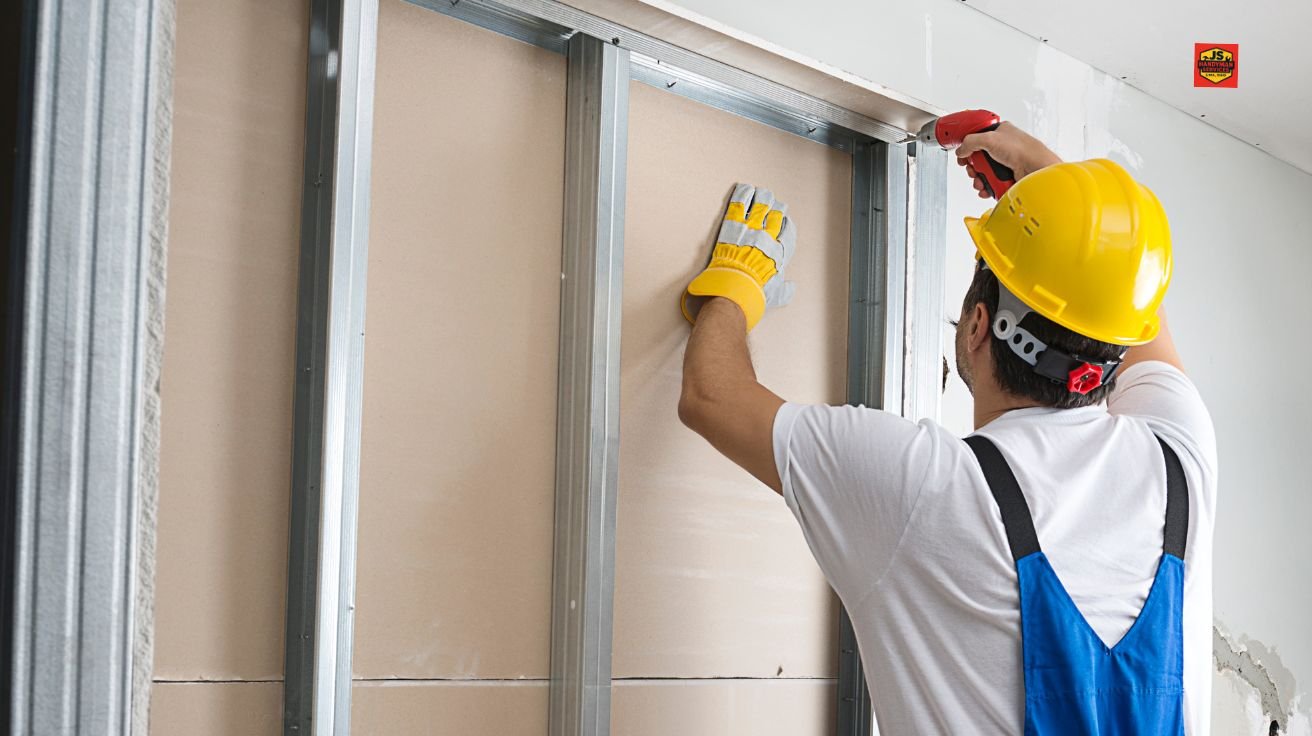Discover the most effective Practices for Effective Drywall Repair and Installation
The art of drywall repair work and installment requires a blend of skill and precision. Grasping the important devices is important for accomplishing a seamless finish. Recognizing the step-by-step process can make a substantial difference in the final outcome. Appropriate techniques for taping and mudding are likewise vital. What continues to be is the understanding of maintenance that assures long life. These aspects with each other produce a polished result worth discovering additionally.

Important Devices for Drywall Repair Work and Installment
When undertaking drywall repair work and installation, having the right tools can greatly boost the effectiveness and high quality of the job. An energy blade is important for cutting drywall sheets exactly, while a drywall saw can assist in making more elaborate cuts. Taping knives, readily available in various dimensions, are crucial for applying joint substance smoothly and evenly. A drywall sander, ideally with a dust collection function, aids achieve a refined surface, minimizing the requirement for comprehensive cleanup.
Additionally, a determining tape warranties accurate dimensions, and a level makes certain that installations are straight and plumb. Safety and security gear, including dust masks and safety glasses, should not be ignored to safeguard versus particles and dirt. Lastly, a stud finder aids in finding mounting participants, ensuring secure installation. By furnishing oneself with these vital tools, the repair work and setup procedure ends up being much more manageable and results in a professional-quality outcome.

Step-by-Step Guide to Patching Holes
Covering holes in drywall requires a methodical strategy to assure a seamless repair. First, the area around the opening must be cleaned and any loose particles removed. For little holes, a putty knife can be used to use a lightweight spackle, pressing it into the opening and smoothing the surface. After it dries, sanding is necessary to produce a flat surface. For larger openings, a patch of drywall may be needed. This entails cutting an item of drywall a little bigger than the opening, protecting it to the wall surface with screws, and making use of joint substance to cover the joints. When the compound dries out, it must be fined sand smooth. Topping the patched area prior to painting will assure an even finish. Following these actions will certainly result in a professional-looking repair service that mixes flawlessly with the bordering wall.
Strategies for Seamless Drywall Installation
Accomplishing smooth drywall setup needs careful planning and execution. It is essential to measure and cut drywall sheets accurately to reduce gaps. Using an energy knife, installers must rack up the board prior to snapping it along the cut line, making sure tidy sides. Correctly lining up the sheets is essential; beginning from the top and working down assists keep harmony.
Attaching drywall to the studs needs consistent spacing, generally every 16 inches, using screws as opposed to nails for far better hold. This strategy minimizes the risk of pops over time. In addition, staggering the seams in between sheets improves structural integrity and decreases the visibility of joints.
Ultimately, utilizing the right thickness of drywall for specific locations-- such as moisture-resistant enters washrooms-- additional adds to a perfect coating. Complying with these methods will lead to a smooth and professional-looking setup, setting the phase for the subsequent completing procedures.
Finishing Touches: Insulation and Mudding
Ending up touches, such as mudding and taping, play a necessary role in attaining a polished drywall surface area. visit the site Insulation involves applying a slim strip of drywall tape over the joints and seams, ensuring a smooth look. This procedure assists stop splits and creates a Get More Information solid bond between drywall sheets. It is important to pick the ideal sort of tape, with paper and fiberglass fit together being the most usual options.
Mudding, or applying joint substance, follows insulation. This compound completes spaces and smooths out the surface for a consistent surface. It is typically used in multiple layers, with each layer requiring to completely dry before fining sand. Proper method involves feathering the edges to mix the compound into the surrounding drywall, lessening exposure.
When completed appropriately, taping and mudding boost both the visual and structural honesty of the drywall installment, leading to a professional-quality finish.
Tips for Keeping Your Drywall After Installation

Furthermore, keeping a constant interior humidity level can stop warping or mold and mildew development. Utilizing a dehumidifier in wet areas, like cellars, is a good idea. It's additionally valuable to occasionally repaint locations that reveal wear, as this secures the underlying product. When moving furnishings or setting up components, care must be exercised to avoid damaging the drywall. By following these upkeep suggestions, homeowners can expand the life of their drywall, guarding it stays an eye-catching attribute of their interiors.
Frequently Asked Concerns
What Security Gear Is Needed for Drywall Repair and Setup?
For drywall repair and installment, essential safety and security gear includes safety and security goggles to safeguard eyes, dirt masks to stop breathing of particles, gloves for hand security, and knee pads for comfort during extended kneeling. Drywall Installation Ogden Utah.
Exactly how Do I Determine the Drywall Thickness Needed for My Task?
To figure out the drywall density required for a task, one should consider the wall's structural needs, regional building codes, and the meant usage of the area, typically choosing 5/8-inch or 1/2-inch drywall.
Can I Fix Drywall Without Removing Furnishings From the Space?
Yes, website here drywall can be repaired without getting rid of furniture from the area. Cautious preparation and protective measures can minimize mess, permitting for reliable fixings while maintaining bordering products secure from dust and damage during the process.
What Kinds of Drywall Are Finest for Various Environments?
Moisture-resistant drywall is perfect for bathrooms and cooking areas, while soundproof drywall fits shared walls in apartments. Fire-rated drywall is best for garages, and common drywall works well in basic living areas, guaranteeing toughness and viability for different environments.
How much time Does It Take for Drywall Mud to Dry Entirely?
Drywall mud commonly takes 24 to two days to dry totally, depending upon aspects like moisture and temperature level (drywall contractors). Thicker applications may need longer drying out times, while thinner layers can dry out quicker. Appropriate ventilation help drying out
The art of drywall repair and installment needs a blend of ability and accuracy. When taking on drywall repair work and setup, having the right devices can substantially enhance the performance and high quality of the job. An energy blade is vital for reducing drywall sheets specifically, while a drywall saw can aid in making more complex cuts. Accomplishing seamless drywall setup demands cautious planning and implementation. Moisture-resistant drywall is ideal for kitchen areas and shower rooms, while soundproof drywall fits shared walls in houses.